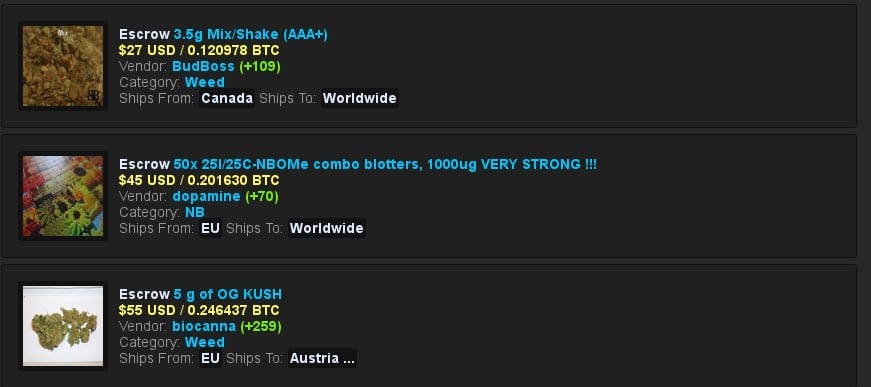
Many subversive communities use niche terminology and phrases. The world of dark net markets is no different.
Dark Net
Originally synonymous with “deep web,” this is any part of the net which is not search engine accessible. Today, “dark net” is commonly used as a misnomer for hidden services accessible only through Tor or I2P. The Tor Project prefers “deep web,” because it does not imply nefarious usage.
Clear Net
An antonym to “dark net,” the clear net is comprised of search engine accessible sites.
Dark Net Market
In the case of dark net markets, “dark net” is a misnomer to represent markets only accessible as hidden services. These markets generally use Bitcoin or other crypto currencies for payment, often for illicit items. The “DarkNetMarkets” subreddit maintains a list of popular Tor and Bitcoin markets.
Tor
According to the Tor Project, “Tor is free software and an open network that helps you defend against traffic analysis, a form of network surveillance that threatens personal freedom and privacy, confidential business activities and relationships, and state security.” Tor is needed to access most dark net markets, with easiest access provided by the Tor Browser bundle. All traffic passes through at least three Tor “relays” before reaching it’s destination.
Tor Hidden Service
Any service accessible only via the Tor network. All Tor hidden services have “onion” domains, instead of “com” or other TLD.
Tor Middle Relay
The first two relays data passes through will always be middle relays. Middle relays never look like the source of traffic, operating only for the speed and security of the Tor network. If a hidden service is the destination, the final relay will be a middle relay. This is a stark contrast to a Tor Exit Relay.
Tor Exit Relay
The final relay for traffic heading to a clear net site. Because dark net markets operate as hidden services, exit relays are not used during market access. When an exit relay is used, the exit relay’s identity is visible to the destination and entire Tor network.
LE
An acronym for “Law Enforcement,” and often a misnomer for “LEO” or “Law Enforcement Officer.” “LE” most often refers to any form of law enforcement which may act antagonistically to dark net markets. Law enforcement agencies are mentioned quite regularly when dealing with illicit transactions, and dark net market communities are no exception.
FE
An acronym for “Finalize Early” or “Finalizing Early,” “FE” references avoiding market escrow. Most markets use an escrow system for orders, allowing the user to release funds when they receive their order. If a vendor requires FE, funds must be released when an order is made. Due to market volatility, being scammed, or scamming, many vendors require early finalization. Escrow or multi-signature escrow is always recommended.
PGP
An acronym for “Pretty Good Privacy.” PGP is a data encryption and decryption software, often used for encryption and decryption of messages on dark net markets. Only the recipient with a matching private key to their public key may decrypt messages, making this an excellent software for encryption and decryption of order info, address info, or any other sensitive data.
OPSEC
“Operations Security“, or “OPSEC” is the act of protecting compromising information. Limiting OPSEC leaks is a key for dark net market users since risk is inherent. This often includes using a bitcoin tumbler, using PGP, and only sharing compromising info such as a personal address with reputable vendors.







